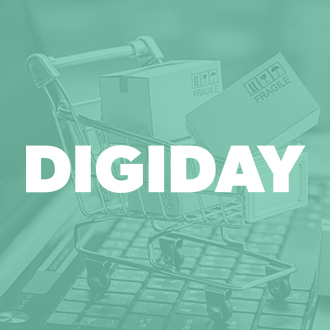[Digiday] Modern Retail: Social or Swift Commerce?

This year’s Digiday Modern Retail Summit was full of unique and interesting conversations. Brands and tech providers alike spoke about how they’re tackling the “retail apocalypse” and developing new strategies to draw consumers in.
Marketers have been trying to figure out how to maximize return throughout this evolution — some creating brands like Quip or Hello Fresh, some building mega-malls like American Dream in New Jersey. It’s hard to tell what’s going to come next, or whether direct-to-consumer or revamped brick & mortar retail options are what consumers are really looking for.
This is exactly the kind of dichotomy discussed between two of the brands featured at this year’s Modern Retail Summit. Tracy Sun, Founder of Poshmark, and Zak Normandin of Iris Nova both discussed their ideas of what makes their businesses successful. Sun of Poshmark said that it’s the idea that their brand is a constructed marketplace for human connection — where buyers look for inspiration and ask for sellers’ expertise on specific pieces before buying. They browse, ask questions, and truly engage.
Sun mentioned that she considers Poshmark to be a “social commerce” space, based on the way buyers and sellers interact on the platform. Despite dollars being exchanged, “it’s not just a transaction,” she noted…
“it’s about humans meeting a vendor; it’s a connection.”
On the other hand, Normandin of Iris Nova said the exact opposite. He acknowledged that consumers don’t love being bombarded with customer service representatives anymore and being able to make a swift impulse purchase either through one of the brand’s vending machines or in a local retail location without much pressure has been a huge part of their success.
Both businesses are extremely popular and widely known across the retail category as thought leaders. So, how can they both still be so different?
I got to thinking about how much more power consumers wield in this new era of retail, especially in terms of forging their own unique buying journeys. The ultimate decision of how to engage with a brand, or the shopping experience in general, is noticeably shifting towards the consumer.
With the rise of the DTC category, it’s simple for buyers to keep out of brick and mortar stores altogether. One of this year’s VIP attendees noted she hasn’t set foot in a grocery store in more than two years. There are so many ways to order and receive goods that the level of engagement and human connection between a brand and its consumer is entirely unpredictable, and entirely determined by the consumer themselves. Even high-value items like engagement rings and cars are being purchased online, sight unseen.
So, is retail now just a spectrum of engagement? Is the branding experience a scale between personal connection and lack thereof?
Neither ideology is right or wrong. We all know consumers spend different amounts of time and focus on different items, many doing research online before buying in-store and many who’d prefer to have things delivered to their door.
I always thought of retail as being brick & mortar, growing up as a small business owner’s daughter. That said, now it resonates more as a synonym for commerce, rather than a physical space, given how much consumer brands have changed the way we shop.
Engagement is the driving force of what makes a brand successful — it’s just the level to which consumers either choose to engage or not that sets them apart from competitors.
Buyers raising their hands and having the option to either connect with a brand on a personal or even emotional level is entirely up to them. This way, brands can not only start to understand what consumer like to engage with, but also whether or not engagement is even essential to their core consumer in the first place.
And that’s where native advertising plays an interesting role in the greater spectrum of digital advertising, and ultimately, how brands connect with their end audiences. Through native, ads are served with interest-based intent, providing a relevant discovery experience to the consumer within the look and feel of the format it lives — and within the preferred digital platforms.
This shift of not only answering the needs of the consumer, but also creating a deeper connection with them through more engaging branded experiences, is continually evolving. Looking forward to seeing how the balance of technological advances and traditional marketing revivals transcends into 2020.












